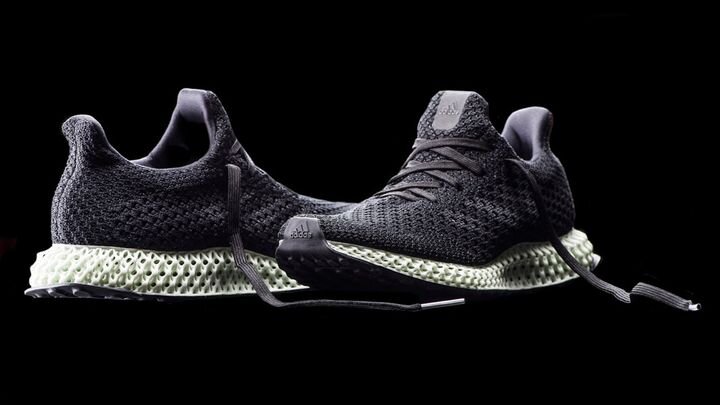![Adidas 3D printed Futurecraft Shoe [Source: Singularity Hub]](https://fabbaloo.com/wp-content/uploads/2020/05/adidas-futurecraft-3d-printed-shoe-3_img_5eb08c2c0c6fe.jpg)
I’m reading a post on SingularityHub discussing how 3D printing will change the retail sales environment in the future, and have some thoughts.
The story, written by none other than Peter Diamandis, cofounder of the Singularity University, founder of the X Prize Foundation and a noted entrepreneur, proposes four ways that 3D printing might affect retail.
His list of four is as follows:
The End of the Supply Chain: With 3D printing, retailers can now purchase raw materials and print inventory themselves, either at warehouses or in the retail outlet. This means the end of suppliers, manufacturers, and distributors.
The End of Waste: Okay, maybe not the complete end of waste, but as consumers increasingly prefer eco-friendly products and retailers look to minimize materials cost, the exactitude of 3D printing is a ready-made solution.
The End of the Spare Parts Market: If you’re a farmer in Iowa and your tractor breaks during harvest time, waiting a few days for a spare part could jeopardize the entire season. A 3D printer solves this problem. And it’ll solve the same problem for everything from coffee makers to skateboard wheels. This doesn’t just mean an end to the spare parts business, it also means a new level of longevity for the products we purchase.
The Rise of User-Designed Products: Sure, there will always be some version of Apple in the market—an uber design-centric company pushing out products so slick they always find a buyer. Yet, for everything from fashion to furniture, ‘customer-designed’ will replace ‘designer-designed’ as the new standard.
Diamandis believes these can all occur within the next ten years. But could they? Let’s take a look at each.
The End of the Supply Chain?
Could retailers 3D print their own inventory and avoid lengthy and expensive shipments of fresh products from afar?
Reasons Why This Might Not Happen: The problem here is one of materials. Virtually all 3D printers today produce objects in only a single material at a time, and this dramatically constraints the types of objects that might be 3D printed by a retailer. You could today in theory 3D print a one-piece children’s toy shovel to dig in a sandbox, but your could not 3D print a smartphone.
Many of today’s retail products are highly complex and require many different types of components with complex assembly procedures. Automated assembly is something I’ve always thought would be a good complement to 3D printing, but there have been very few attempts at that technology in the space, and none seem to have gained traction.
Probability: I’d say this one would be low, unless there is a dramatic introduction of a new form of 3D printing that can efficiently produce items in multiple materials.
The End of Waste?
Diamandis suggests people seeking eco-friendly products might turn towards 3D printed options.
Reasons Why This Might Not Happen: 3D printing is inherently low-waste, as most manufacturing today is done using highly wasteful subtractive making processes. 3D printing is additive and tends to use only what is necessary to produce the part. That said, it is a more expensive method of producing items.
Are 3D printed products more eco-friendly? I’m not sure they are: they use more energy to create things, and there are frequently bad prints that result in waste plastics. Every 3D printer operator I know has a near-constant flow of trashed 3D prints, removed support material and leftover bad filament, and this is not going away.
Probability: Low. Once the public really understands what 3D printing is and isn’t, I don’t think there is a notable eco-friendly aspect that could be transformed into a brand.
The End of the Spare Parts Market?
Diamandis proposes that users might simply 3D print any required spare parts and avoid long waits for production and shipment of replacements.
Reasons Why This Might Not Happen: The number one reason why this won’t happen is that the owners of the part designs won’t release them to the public for cheap 3D printing when they have a monopoly selling injection-molded versions at high costs. Until that equation changes, there is no reason for any manufacturer to allow this.
In some rare cases it may be possible for third parties or open source projects to develop “alternative” parts that are not the same design, but could do the job. However, it’s then highly likely the original manufacturer will disavow any responsibility for troubles encountered by anyone using non-standard parts.
Probability: Again, the probability of this happening is very low. Based on our current economic equation, only very niche scenarios might qualify, such as parts for remote locations unable to receive normal spare parts.
The Rise of User-Designed Products?
Diamandis suggests that in the future there will be a place for customer-designed items over designer-designed items by leveraging 3D printing.
Reasons Why This Might Not Happen: There is a kind of proof that this cannot happen already: when desktop 3D printers were introduced, the proposal was that “Everyone is a Maker”. If one were able to design 3D objects, then these machines were quite useful. Unfortunately, it was found that only a slim percentage of the general population had the interest, time, aptitude and funds to become 3D modellers. As a result, the consumer 3D printing market never appeared.
Therefore, it’s highly likely that consumers in general won’t want to design their own stuff. Designing GOOD things is a very hard thing to do.
Probability: I propose this possibility to be low to moderate. I say moderate because if you somehow automate the design process, then more of this could take place. For example, if you stand on a special device that 3D scans your feet and develops a “perfect” shoe 3D model for you, then perhaps you might say that the user designed them. This type of operation will surely be more frequently seen in the next ten years.
What are your thoughts?
Via Singularity Hub (Hat tip to Tuan)

